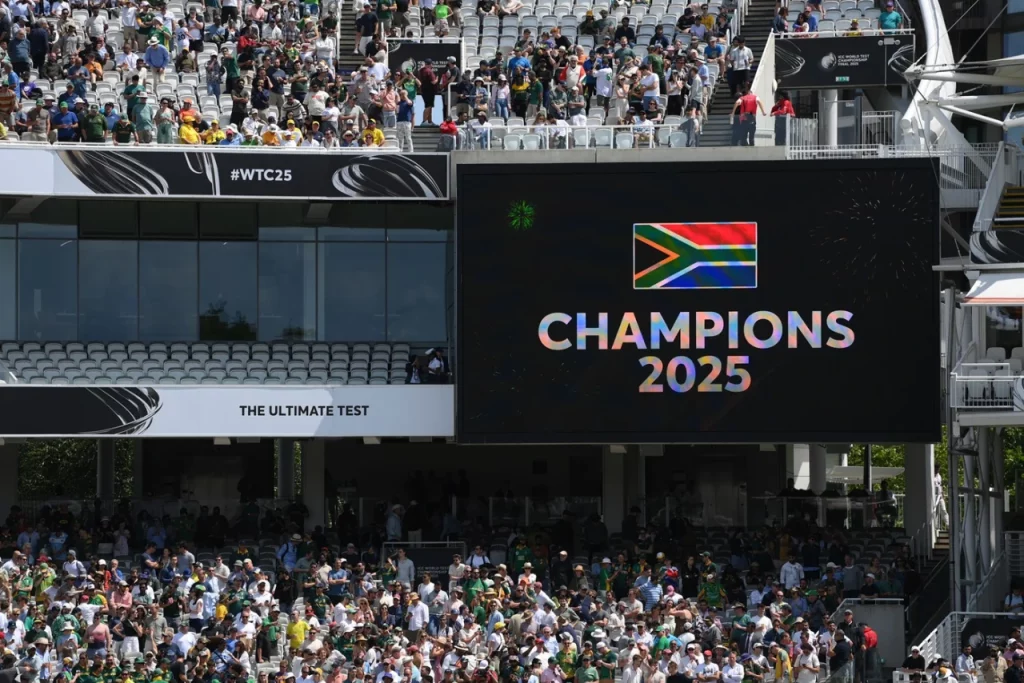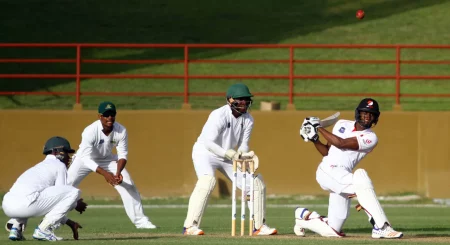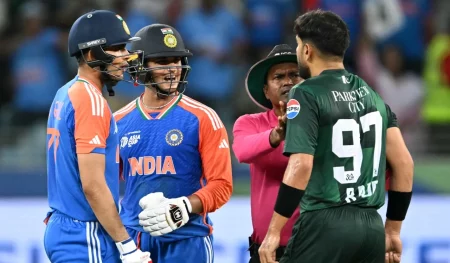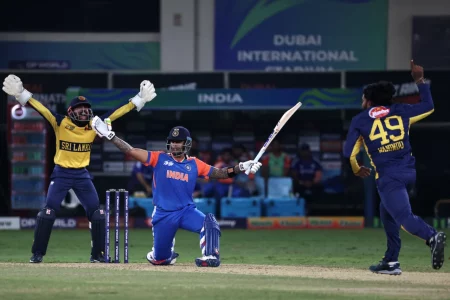The debate about dividing the Test-playing nations into two tiers has been around for more than a decade; however, nations still have mixed opinions about the model. During the International Cricket Council’s (ICC) annual conference in July, the model was a significant talking point, which reignited the discussion once again. The global body formed a group, headed by former New Zealand batter Roger Twose, to work out ways for improving the World Test Championship (WTC) before the next cycle (2027–29).
The details about the group were not revealed, but it is understood that it includes representatives from both Test-playing and non-Test-playing nations.
ECB chairman Richard Thompson, speaking to BBC’s Test Match Special on day one of The Oval Test between England and India, said the model will not be an ultimate solution to the decreasing popularity of Test cricket across the world. He also said that the system for dividing the teams into tiers would mean countries like England, which fork out the most resources for the format, could be relegated to lower tiers based on performance.
“There are a lot of options that we’ve got to look at – tiers would be one of them,” he said. “We wouldn’t want, as England, we may go through a fallow period, and that means, what, we fall into Division Two and we don’t play Australia and India? That couldn’t happen. There has to be a sense that common sense needs to play out here.”
In his opinion, the existing framework could be tweaked to function better, which would also grant teams outside of the Big Three the support and exposure to grow bigger in the format. Citing South Africa’s recent WTC final win as an example, he said the current model has already created “relevance” among nations, where Test cricket seemed to be disappearing quickly.
“The World Test Championship could work better than it does. It has definitely improved the narrative, [and] it has created a relevance,” Thompson said. “Seeing what it meant for South Africa to win – who are crushed by rugby in their own country – and seeing players I know really well, like Graeme Smith, in tears on the outfield, that was a real moment seeing them win. As much as I was critical that they turned up with a ‘B’ team when they played New Zealand [in 2024], it was still good for the game when the underdog wins.”
One of the problems with the current WTC cycle is that there is immense disparity between the volume of cricket played by different teams. England, Australia, and India played 22, 19, and 19 Test games in the last cycle respectively, which, when compared to the eventual champions South Africa’s tally of 12 games, seems somewhat unfair.
There is also the clash between different formats, especially multi-nation tournaments, like the one Thompson cited as an example: the 2028 LA Olympics, which fills up the international calendar of teams to the brim, forcing them to shift focus from Test cricket to shorter formats.
“But the reality of it is, the World Test Championship, if it was improved upon and certain changes were made, maybe you don’t need two tiers of Test cricket. What you do need is a schedule that makes a lot more sense than it currently does, and that must include the volume of bilateral cricket that you play, white-ball and red-ball, and recognising that from 2028, we have an Olympics.
“So what happens in 2028, when we have an Olympics, and our best 11 cricketers have got to go to LA for two weeks in the middle of July? That is going to throw up some challenges.”
The ICC needs clarity over the two-tier model with immediate effect, given that many boards have already started conversations regarding bilateral commitments in the next WTC cycle. On top of that, the media rights for the upcoming commercial cycle, starting in July 2027, are also up for renewal as early as next year.
Todd Greenberg, Cricket Australia’s CEO, said that Test nations like India, Australia, and England cannot grow in isolation from other teams. Hence, the improvement of those teams in the format is equally crucial.
“The real challenge here is what role do we all play,” Greenberg told SEN Radio. “When I say we, those three countries that [are] putting resources and energy into Test cricket, what role do we have to help others make sure that they step up because it’s in our interest to see a strong West Indies, a strong Pakistan, New Zealand, [and] South Africa. We want those countries being strong in this format of the game, but clearly they’re going to need help. They can’t do it alone. It’s incumbent on all of cricket to help.”
He said he is all in for the two-tier model for red-ball cricket if it helps all teams to grow.
“My open mind is in reference to, if it helps grow the opportunities for those other countries to be stronger, and have better resources in Test match cricket, if it does that, then I’m open for it,” he said. “But if it doesn’t achieve that, and it actually affects the opposite, then I wouldn’t be supportive.
“Talking to CEOs of the West Indies and other [boards], when I was with them recently, everyone’s got a very open mind to this because they know that we’re going to need some level of change in order to extract value in this part of the game.”



